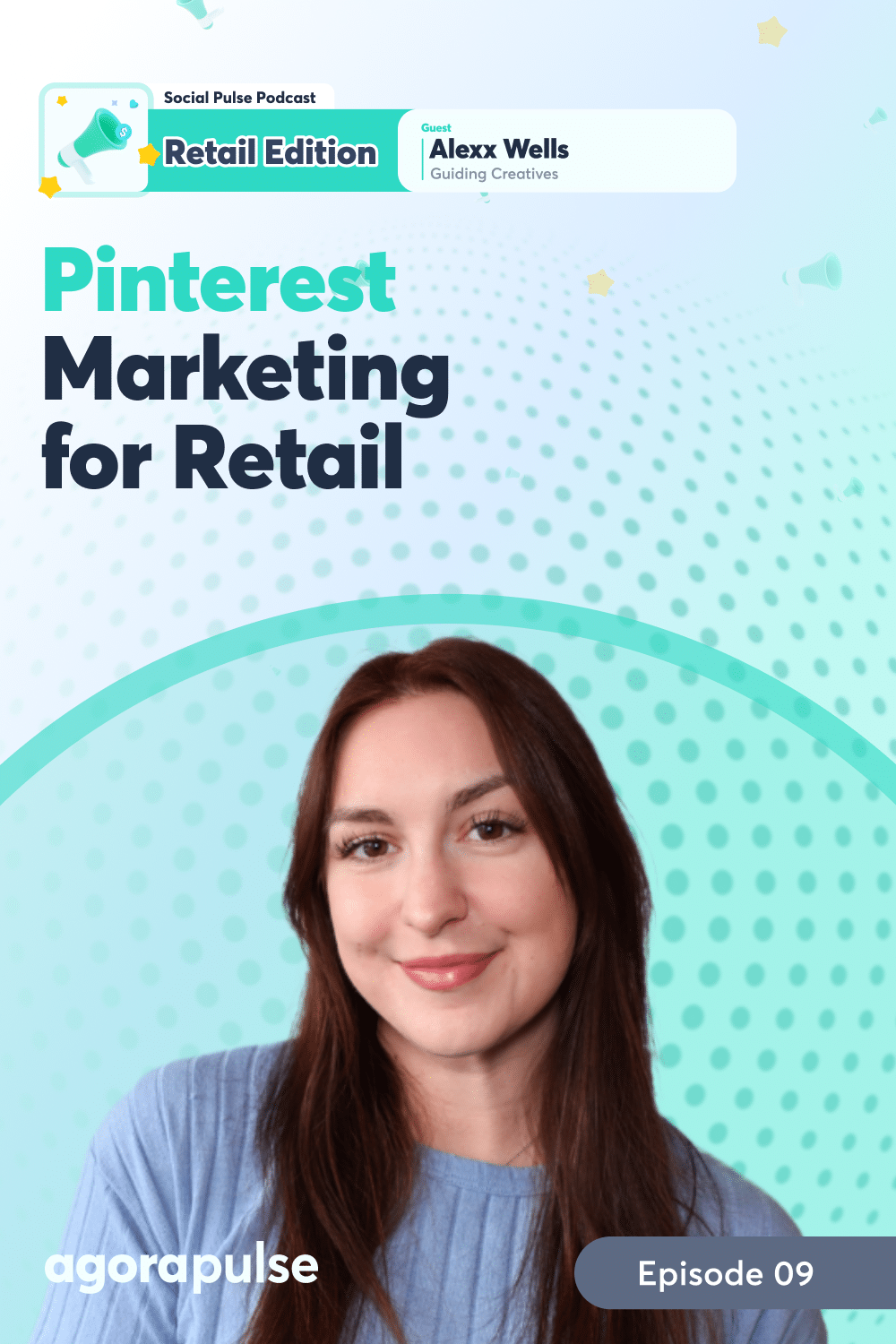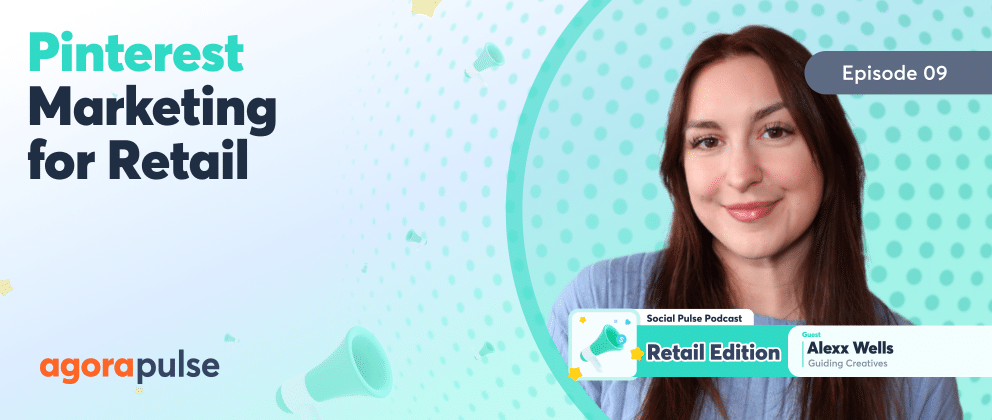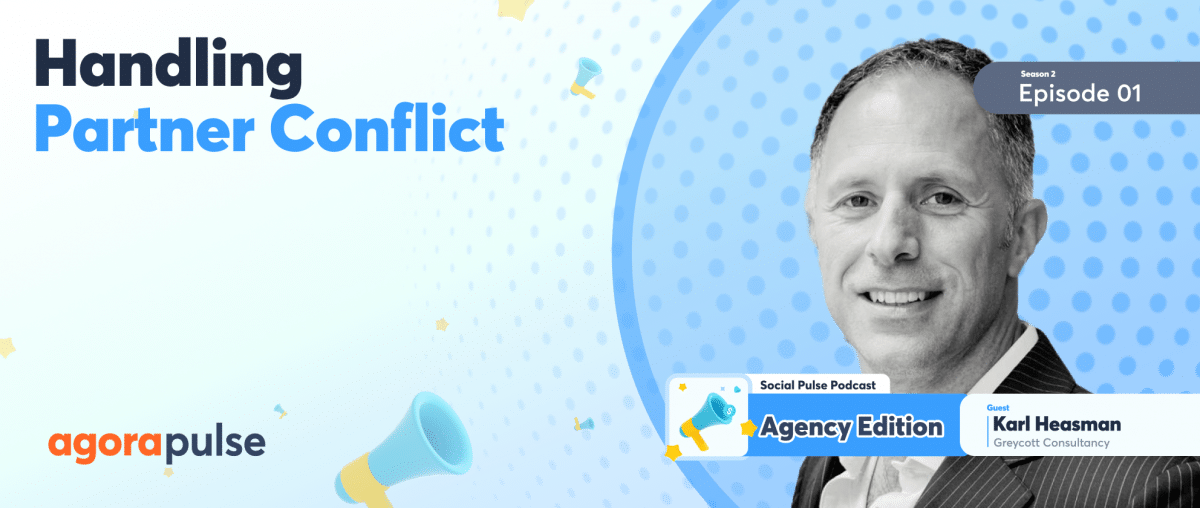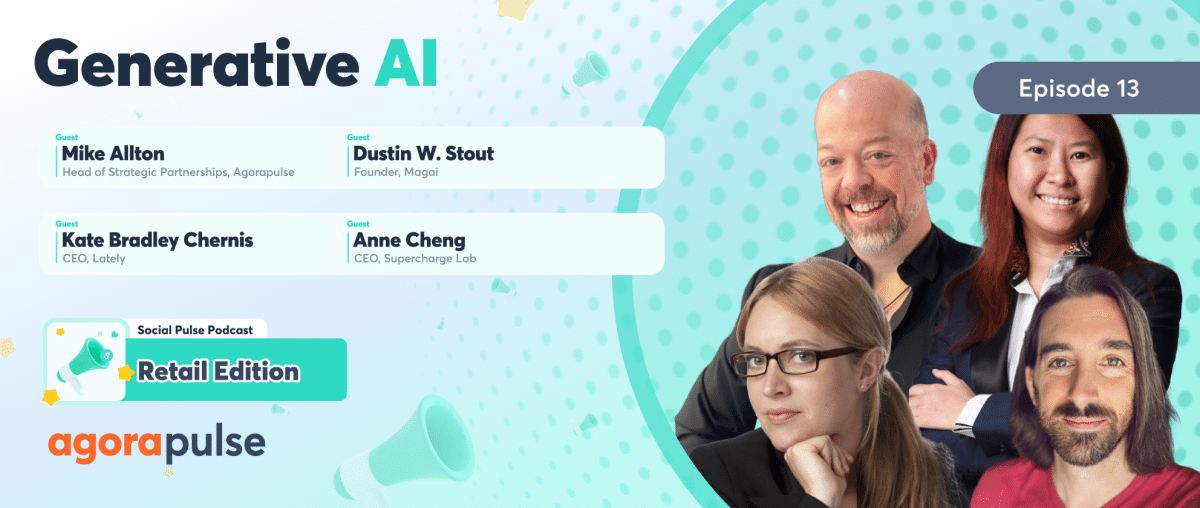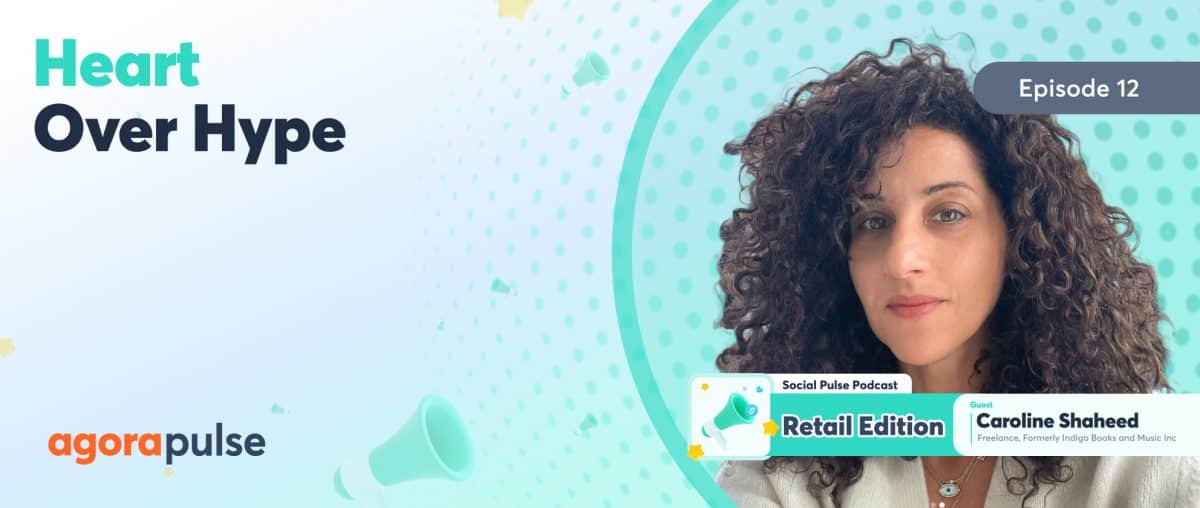Now, Pinterest has nearly 500 million users worldwide, and it generated over 3 billion in revenue in 2023. Retail social media marketers cannot afford to ignore this platform. And yet it remains elusive to so many between the recommended tall images to distributing content to boards within an account, aspects of Pinterest remain just different enough that many marketers avoid it in favor of more typical Facebook or even Instagram.
Is that a mistake? How should marketers approach Pinterest? And if it’s a new platform to the organization, where should we begin?
Mike Allton: Well, that’s what Alexx Wells is going to talk to us about. Alexx is a full-time freelancer with over 800 clients from around the world. I first met her while partnering with Fiverr on our Agency Summit: Pinterest Edition virtual event where she was brought in by Fiverr as a shining example of their freelance platform and the amazing work she does for clients, particularly with Pinterest. She’s completely self-taught and has demonstrated an incredible level of creativity and passion, which we now get to benefit from.
Listen to the podcast below or read on for the highlights.
Guiding Creatives
I’d love you to start by just telling us more about the work that you do at Guiding Creatives.
Alexx Wells: So Guiding Creatives, I call it my little ecosystem brand, you’ll notice as I’m talking about Pinterest. Even I do a lot of nature comparisons, but basically what I do is I just guide creatives, whether that be through an agency lens where I’m helping brands and businesses or even freelancers. I do really enjoy to help freelancers learn how they can broaden the economy.
The best part is there’s so much overlap with using primarily Pinterest. And I’ve been leaning into YouTube more recently as well, but that’s two of my gold mines.
Mike Allton: Let’s talk Pinterest.
How is Pinterest different from the other major social networks, particularly from a retail marketing perspective?
Alexx Wells: Pinterest is a search engine at the core. So a lot of social media have been trying to catch up on the SEO, but Pinterest is a search engine with a human aspect. For retail, you put it on there, and it’s evergreen. The content is there. You don’t have to hit a trend. You don’t have to make a viral moment. You put yourself out there and people will search for you and find you.
It’s so much discoverability, and it’s so untapped. And because there’s such a big grid layout, it’s not as competitive. You know, people aren’t scrolling through 10 posts. They’re being exposed to, if you’re on a phone, probably like six in one scroll.
Pinterest opens so many doors, but not a lot of people use it. So they’re missing out on this. You can even sit and leave it, but, there’s just a lot of discoverability there for brands.
Mike Allton: Yeah. In fact, one of the things that, we used to talk about was the fact that the average half life of a tweet is about 18 seconds.
The average half-life of a Pinterest pin is more like 18 months. You’d agree with that, right?
Alexx Wells: Yeah, I’ve had in my personal experience and with clients. Like right now, one of my clients that we’ve been pinning steady for—we’re going on three years—a pin from the first year is the most viral pin right now.
So that’s a three-year-old pin, and that’s the best one performing right now.
Mike Allton: Wow. That is still shocking to me. And, in fact, I know one of the misperceptions of Pinterest is that it’s for a very specific, certain demographic. And that couldn’t be further from the truth. All kinds of people and demographics and regions use Pinterest.
In fact, our podcast editor, Jeff Sieh, and he and I used to do a show, the Manly Pinterest Tips Show. I’ll drop a link to it in the show notes for those of you who want to go back and get some additional information on Pinterest, particularly from an alternative perspective.
But I want to ask you, Alexx, what are some aspects of Pinterest? These could be features or perhaps just the way the platform is used that are particularly good for retail marketers.
Alexx Wells: So, in recent years, Pinterest has put in a lot of effort to help with the e-commerce side. It used to be just for bloggers, but now retail is a big portion of it and they have product pins.
So what that means: It’s not just creating graphics or videos. It’s your product.
And what’s untapped is that Pinterest has this integration. You can have Shopify, that’s the ideal, but if you have a domain that you own, a shop that you own, you can upload your catalog through code or an RSS feed. All your products, especially if they’ve already been optimized on your website, they take that metadata and are instantly imported into Pinterest.
Your products are instantly added to the product pins. This is why I think it’s so on tap because, yes, there is a side of Pinterest that is a lot of work where you’re manually pinning, but because they have this integration, if you upload your catalog and it’s already optimized on your website in the metadata, that’s like if you have a hundred products, a hundred optimized pins out there in circulation, and that is like an hour or two work. It’s very simple.
Mike Allton: Love that. In fact, I don’t know if you’re familiar with Feedonomics, but I interviewed someone from Feedonomics as part of our Retail Summit. And in fact, those of you listening, subscribe to this podcast right now because I’m going to actually take that interview and drop it as a podcast episode. She was teaching us exactly how to use Feedonomics with your Shopify account to make sure that your product catalogs on all the social networks that support product catalogs, that’s TikTok, Facebook shops, Pinterest. Like you were just talking about, Alexx, it automatically changes and converts and optimizes each product’s listing according to different platforms.
So you don’t have to try to keep up with how each one’s a little bit different. I’m sure you can imagine an Instagram shoppable product is going to look and act different than a Pinterest pin.
We’ll drop that, like I said, in a few weeks, so make sure you subscribe, but no doubt many of the retail social media managers that are listening right now probably aren’t actively using Pinterest, at least not for their brand. But, thanks to what we’re talking about today, they want to start.
How to Get Started With Pinterest Marketing
What are the first steps that they should take?
Alexx Wells: The first thing you should do—and this is the nudge I give everybody—even clients and brands that want to work with me, but they’re not sure how much they can pour into Pinterest.
- Create and optimize a profile. At the minimum, claim your website and have a profile, because you want to be found in search.
- If you’re found in search by your profile, people can click on your website.
- Something that people don’t realize is the audience. If I’m looking for fashion outfit inspiration, and I’m surfing the web—that ages me the way I say that, but if I’m surfing the web—and I say, “I can pin that from your website, I can pin that from your website to my Pinterest, and that’ll be in circulation.” If you’re on Pinterest and you have a claimed website, because that came from your domain, Pinterest will give you that pin. It associates that pin with your profile. It reminds people of the ownership. When that gets in the web of repinning, people will come back to your profile. If you don’t have a Pinterest account and you don’t have a website claimed, people may never know where that came from because you’re depending on the user to tell them.
That is the minimum. And I think that also opens the door for people because the hardest part of anything is just getting started.
SEO Pinterest
Mike Allton: I mentioned at the outset, one of the things that are different, that is different about Pinterest is that you’ve got these boards, these groupings or ways to collect different kinds of pins.
How does that impact or relate to the SEO perspective? Does it matter what boards I set up?
Alexx Wells: A general rule of thumb is you want to have full boards for one. You want to, boards that have over 50 pins, especially if you are a creator or a retailer, if you’re a user, whatever you want to do. But if you’re trying to run it like a business, you want to show full boards, but in terms of SEO, I always recommend that you can have a board for a product category.
So that’s more product-focused in your SEO. You would use keywords that focus on the product, but if you have something that is like summer vibes, you would want to have a summer aesthetic, use those kinds of keywords to target your audience in a different board. And because you can pin to boards, you can pin the same pin to two boards. This product may fit with this category, but it also fits with this audience. And now you’re just opening up all the different ways people can find you.
“That’s what you have to remember is one thing I love to remind people about SEO. It’s not a computer metric. It’s real people having real thoughts and real experiences searching for something.”
Although you might have a product that fits perfectly with somebody, if they’re just looking for this new summer glassware, but they don’t know the name of your product, you need to target what they’re searching.
That’s why I always tell people to claim your branded and your categorical keywords, but also really claim the audience ones.
Mike Allton: And I love that you mentioned having at least 50 pins in a board. And again, for somebody who maybe isn’t familiar with Pinterest, they might be thinking, “Oh no, that means it’s going to take me a couple months to fill out that board.” But that’s not true, is it? We could pin as many pins as we want into a board without worrying or overwhelming an audience. Isn’t that right?
Alexx Wells: Yeah, because Pinterest operates like the search engine, so it’s a little bit different. Followers are not even an important metric on Pinterest. I don’t track followers. If you go into the Analytics center, you actually can’t track followers growth. So that’s why it’s not as important because people don’t go to your profile unless they’re going to click to your website, which is great.
But the goal is to get as many pins out there and into the search feed.
I actually had a client recently who has this website of thousands and thousands of photos, and he just imported them using an RRS feed. The amount of pins per day he was putting up was crazy. He filled that in no time.
But the thing is: SEO starts as soon as you do. So even if it takes you a long time to get to that point, if you’re working towards it, that consistency will also be rewarded.
Mike Allton: That’s a terrific point. SEO starts when you do. And if this isn’t something that you want to be able to want to handle manually, you can use Agorapulse.
The Dos and Don’ts for Retail Marketing on Pinterest
What other best practices specifically for retail marketing on Pinterest?
Is there anything that social media managers shouldn’t do?
Alexx Wells: Something I see a lot of people get caught up in: I do believe in the power of repurposing because even though I may use Instagram and Pinterest, I know that I use it for two different reasons. So, you can use the same content you’re creating and schedule it to Pinterest as well.
But the biggest mistake people make are hashtags. Hashtags did used to have a place on Pinterest, but they don’t anymore. It’s about the keywords in descriptions, the titles, even in your board descriptions, like keywords everywhere. You can put them on your graphics everywhere.
The mistake happens when you are scheduling, and you’re using the exact same caption, and you’re carrying over hashtags.
I actually ran an experiment with a client recently because they wanted to save some costs and really just use the exact same captions. And the metrics plummeted because we were depending on hashtags. If you are using hashtags, it’s going to cost you on Pinterest. The little tweaking you can do to add keywords will make all the difference while still like streamlining and repurposing to make it easier for social media managers.
Mike Allton: That is such a powerful tip, and I want to underline how important that is. It’s why at Agorapulse, we allow you to customize each individual social network and posts in the preview before you actually schedule it out. So you can start with the same caption, but then you can go to the Pinterest post and edit that caption, add the keywords, remove any hashtags.
If you’re posting to Instagram, maybe you’re going to want to post 20 to 25 hashtags, whereas if you’re posting to Facebook or X or LinkedIn, no more than two or three and none for Pinterest.
Measuring Impact and Social Media ROI
How are you currently measuring the business impact for social media overall?
And this can be for you personally or for clients that you’re working with.
Alexx Wells: Something I’ve really learned because I’m self-taught jumping into social media. It can be intimidating, and you’re always looking at those really big metrics.
You’re looking at followers, you’re looking at how many likes you get per post, but if there’s something I’ve learned and Pinterest is a great example of this because like I said, followers don’t matter. And impressions matter on Pinterest, but it doesn’t actually always convert. I’ve worked with a lot of accounts where we’ve had to mediate because they have so many impressions, but no conversions.
So for me personally and for my clients, that’s why Pinterest and YouTube has so much data I’m really looking at. For example, on video, you’re looking at how long people are watching it, if they’re watching it more than once. I’m looking at the quality of the comments. I really like to see interaction, people being inspired, people saying, “I love this, can I know more?”
And then outbound clicks, or just seeing stuff on your website. Because for me, individually as a freelancer and as a social media manager, I barely have any time to prioritize my own social media and it’s because I’m working so much and I’m getting so many leads, which is great, but it is a really good representation to me that social media doesn’t always mean results.
And it doesn’t mean that if you have a smaller social media, you can’t get results. And I like people to remember that even when they’re going into management and when they’re going into their strategy because you can convert at very low levels. Equality, a thousand followers is way better than a hundred thousand that came from either inorganic ways, a viral moment that’s not representative or just empty engagement.
So I really look at conversation and I look at outbound clicks.
Can You Use Videos for Pinterest?
Mike Allton: Are you pinning videos today?
Have you seen any success with videos on Pinterest?
Alexx Wells: Pinterest had a very interesting video experience. Everybody had to compete with TikTok that had to happen over the past three to four years. We’ve seen it everywhere. And Pinterest introduced these things called Idea pins, and they were their own short feed video. But what they did, because they didn’t want to lose the essence of Pinterest (having clickable images to have a link in every single image) is they didn’t allow links on the videos.
They try to do this to not punish the current user base and bring in new ones. But what this actually did was they used a new algorithm for the videos. So these were the ones that were going viral. These were the ones that were getting all the success, but there was no conversions. So they’ve backed that now.
It’s different in different regions, but they’re starting to just create one standard pin. Idea pins are no more. It’s just one. Organic pin or paid pin, and it can be a carousel, it can be an image, it can be a video, and you can add links to everything. So, videos are good on Pinterest, and you should use them if you have them.
In my experience, a pro tip is: Static pins will get you clicks, videos will get you brand awareness.
So, I do think you should use them, but I have noticed people really leaning into video because it was booming for a while, but we’re definitely reverting back to static Pinterest.
Mike Allton: Yeah, it’s something I’m exploring here because we’re obviously doing these podcasts, these initiated as a video interview, and I’m creating all kinds of vertical clips from these posts and I’m sharing them to TikTok and to Reels.
I’m thinking, “Well, this isn’t quite the kind of content I would typically put on Pinterest, but everything’s worth a test, right?”
Tool Stack
So we’ve talked about a couple of tools, but what else is in your tool stack?
What are you using to help create your presence on Pinterest?
Alexx Wells: Mostly on Pinterest, I’m using a lot of keyword explorer tools. I have one called Pin Inspector. I can send you the link for that. It is well worth it. It’s a one-time software, and it just really helps get keywords, it helps rank keywords. Because one thing about Pinterest is it’s seasonal.
And you also have to be ahead of the game. So if you are pinning for Christmas, if you go on Pinterest in August and look at what’s trending, it’s Christmas because people on Pinterest are usually looking for very in-the-moment, like last-minute ideas. Or they’re planning, so you need to be ahead of it.
So you really need to pay attention to keywords because if you don’t put an optimized pin out 40 to 60 days before the holidays, and then you start optimizing during December, you’re going to miss the wait. You’re not going to rank in search. Keywords are really important. And I’ve also been using Agorapulse for my scheduling.
It’s funny earlier, how you brought up that you can individually edit the captions. That’s exactly what I do. I use the same caption and then I go into Pinterest. And I rework it to have the keywords and remove the hashtags and it makes it so seamless. So it’s a balance of the keyword research, which is one of the hardest parts and then the scheduling, which is definitely the second hardest part of Pinterest.
Keyword research
Mike Allton: Let’s talk about that keyword research a little bit more for just a second. What is it telling you about these keywords? How many pins are out there? How many people are searching for that particular keyword? I mean, is it functioning pretty much like a Google keyword search?
Alexx Wells: Yeah, it’s very similar. It gives me trends. So you can actually get the trend graph, you can see if the slope is positive or negative, you can see it on a timescale. It also gives you a ranking. So between 12 and one. It’s based on search volume versus competition. But something I will also say is it’s okay to use lower search volume if they don’t have a lot of competition because if you go rank first somewhere, rank first somewhere, but it works like other keyword research tools.
I just like the format and how it works and the speed of it. And you can also then get monthly searches from it on an expert. It also helps you look at boards and profiles, but I don’t really use it so much for that. But keyword research is definitely a hard part of this because it’s time. It’s not even just skill and being able to analyze what you’re seeing.
It’s a lot of time because you want to use five powerful keywords in every pin description. You want to have a keyword in your board descriptions, the graphics, the titles, that adds up when you need 50 pins per board. So. Anything that can streamline that process. I’m all about saving time. Time is money. So save it.
Mike Allton: Totally agree with that. One quick follow-up question. When you’re talking about 50 pins per board, is it recommended that they’re exclusively your pins and content from your website? Or is it still a good idea to mix in and curate other people’s pins and content?
Alexx Wells: I advise to only have your content, especially if you are a business or a retail brand, just because you want everything to be very associated with your brand. You want it to be like a landing page, your shop. There’s also a risk recently as well, because Pinterest is using AI to really make sure everybody’s following the community guidelines. You can edit pins at any time. If you’re saving other people’s pins and they change something on it and it doesn’t represent you anymore, it’s there. Unless you’re paying attention (which trust me, you’re not). So many pins go through.
But if you are somebody who is just a creator or a creative, if you’re using it individually for ideas, it’s there. Pin away. If you’re trying to build a personal brand, it’s actually good for you to re-pin other people because you start to tell Pinterest what content you’re going to make.
So for me, if I’m using it for freelance coaching. I start saving maybe social media tips, blah, blah, blah. And then Pinterest is like, “Okay, when she starts posting, this is where we’re going to put her.” So it’s kind of a balance, but if you are a retail brand, the most important thing is to think about what you’re associating with and the risks that that take.
What other resources, do you recommend that might be individuals to follow blog posts, podcast, events? Who do you turn to today to keep up with Pinterest?
Alexx Wells: Yeah. So for Pinterest, for me, a lot of it is just learning on my own. Unfortunately, I know that’s not helpful to everybody, but it’s because I work with so many different niches that I’m in the data every day.
But I will say, when I actually attended the summit that I spoke at, I was like, “I need a LinkedIn,” because I was ignoring LinkedIn. And I connected with a bunch of people from that summit on LinkedIn. And that is right now my goldmine for anything social media. I do enjoy podcasts. I do do some workshops. I usually just go on YouTube or Udemy and find just what people are up to and what they’re teaching.
But what I like about LinkedIn is I’m seeing people who are also working in exactly what I’m working. They’re having the same struggles as me, and they’re also learning through the same way I’m learning. So I think that lens is really important. And on LinkedIn, it doesn’t feel like people are selling to you. It seems like people are trying to say, I’m seeing this, let’s talk about it. So I think LinkedIn is also an untapped resource if you are somebody who wants to be a social media manager who wants to learn Pinterest. And then you can go down so many rabbit holes because there’s so many really smart people who have courses and just podcasts and free information that you should definitely take advantage of.
Mike Allton: Thank you. Alexx, this has been so much fun, so informative. Like I said, I’ve got whole pages full of notes. For those who want to learn more about you and connect with and follow you, where should they go?
Alexx Wells: Yeah, so, ideally LinkedIn is where I’m trying to grow. You can also find me on Instagram. It’s at guidingcreatives. My email is out there. I’m on YouTube. If you ever want to talk to me, ask me questions, learn from me. I’m very open. Like I said, part of Guiding Creatives is not just guiding people on their creative campaigns, but also people who want to work in the gig economy, because things like this are so exciting. I like talking to and working with enthusiastic people, and I really do think freelancing has brought out the best in me.
Mike Allton: Fantastic. We will have the links to all of Alex’s social profiles and websites and everything else we’ve talked about in the show notes. And that’s all we’ve got for today, friends. So please don’t forget to follow us and subscribe on Apple, the Social Pulse Podcast: Retail Edition, and leave us a review. Let me know what you think. Until next time.
